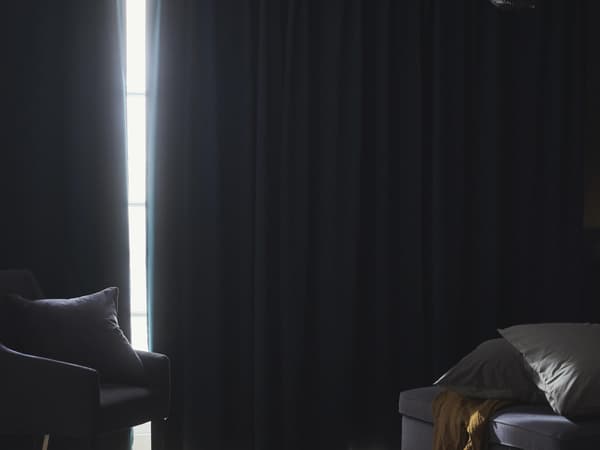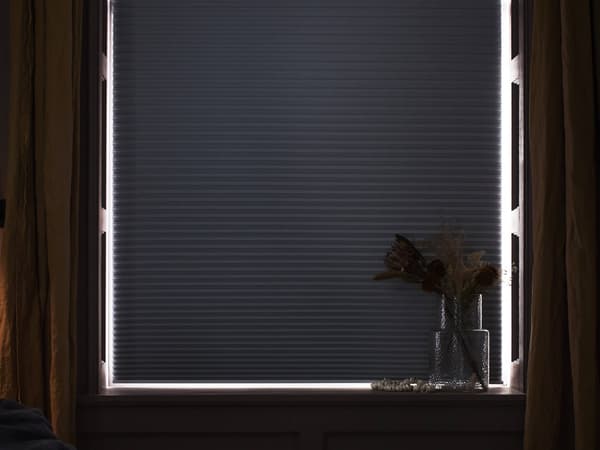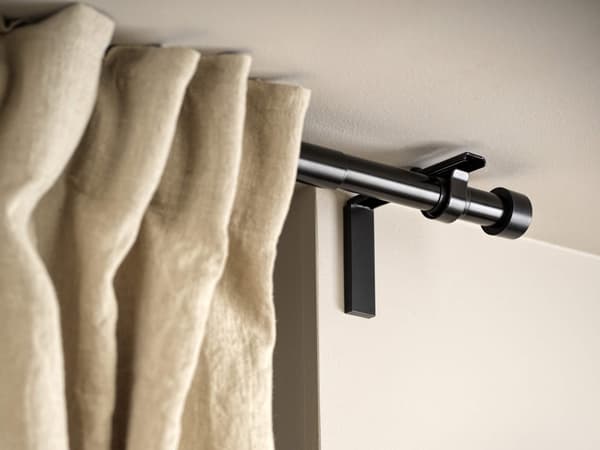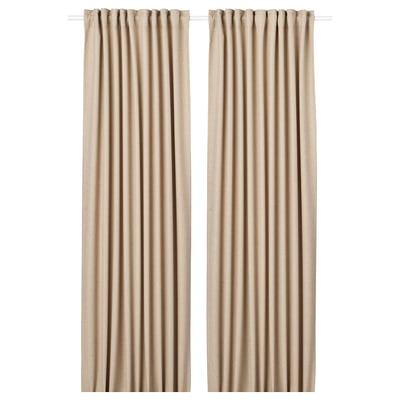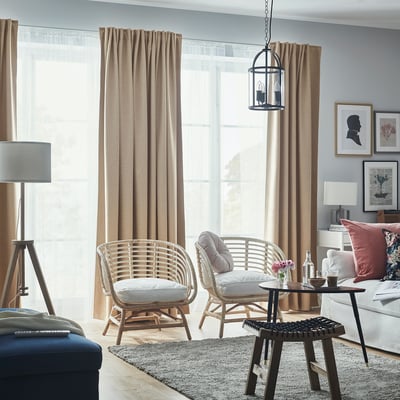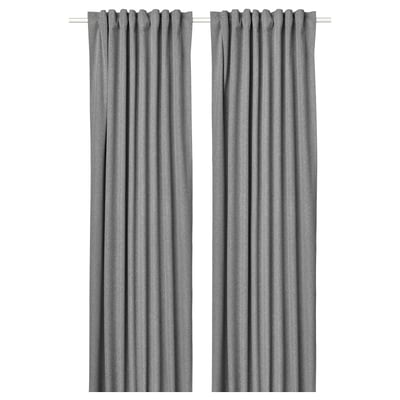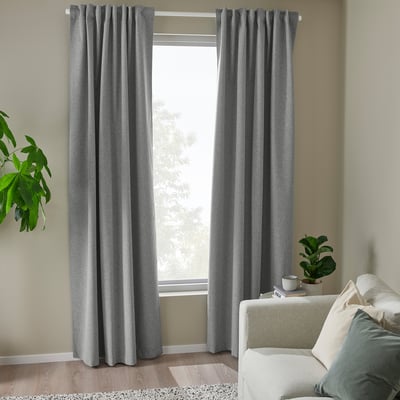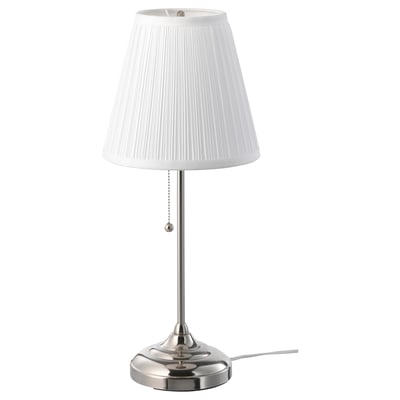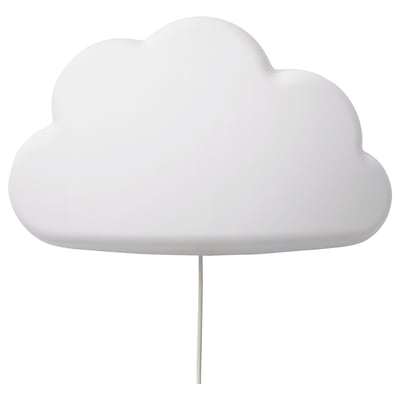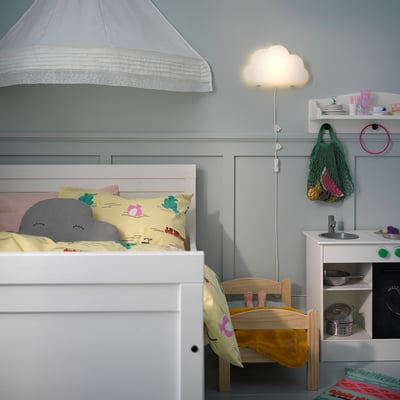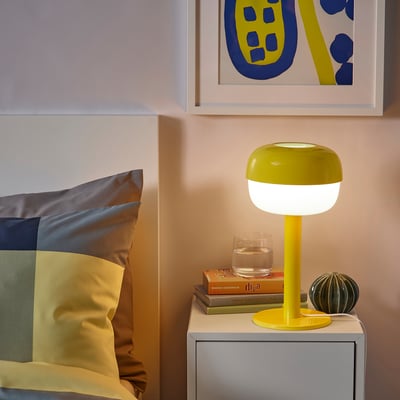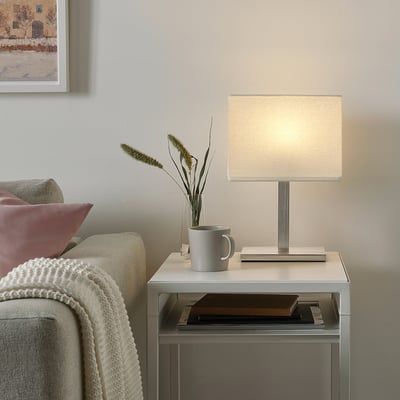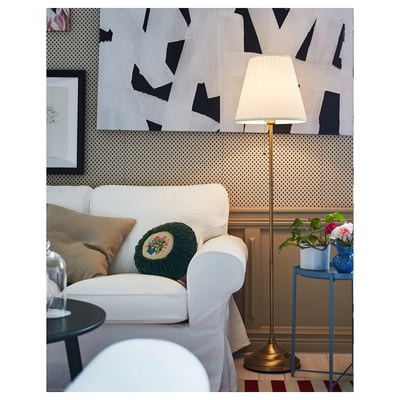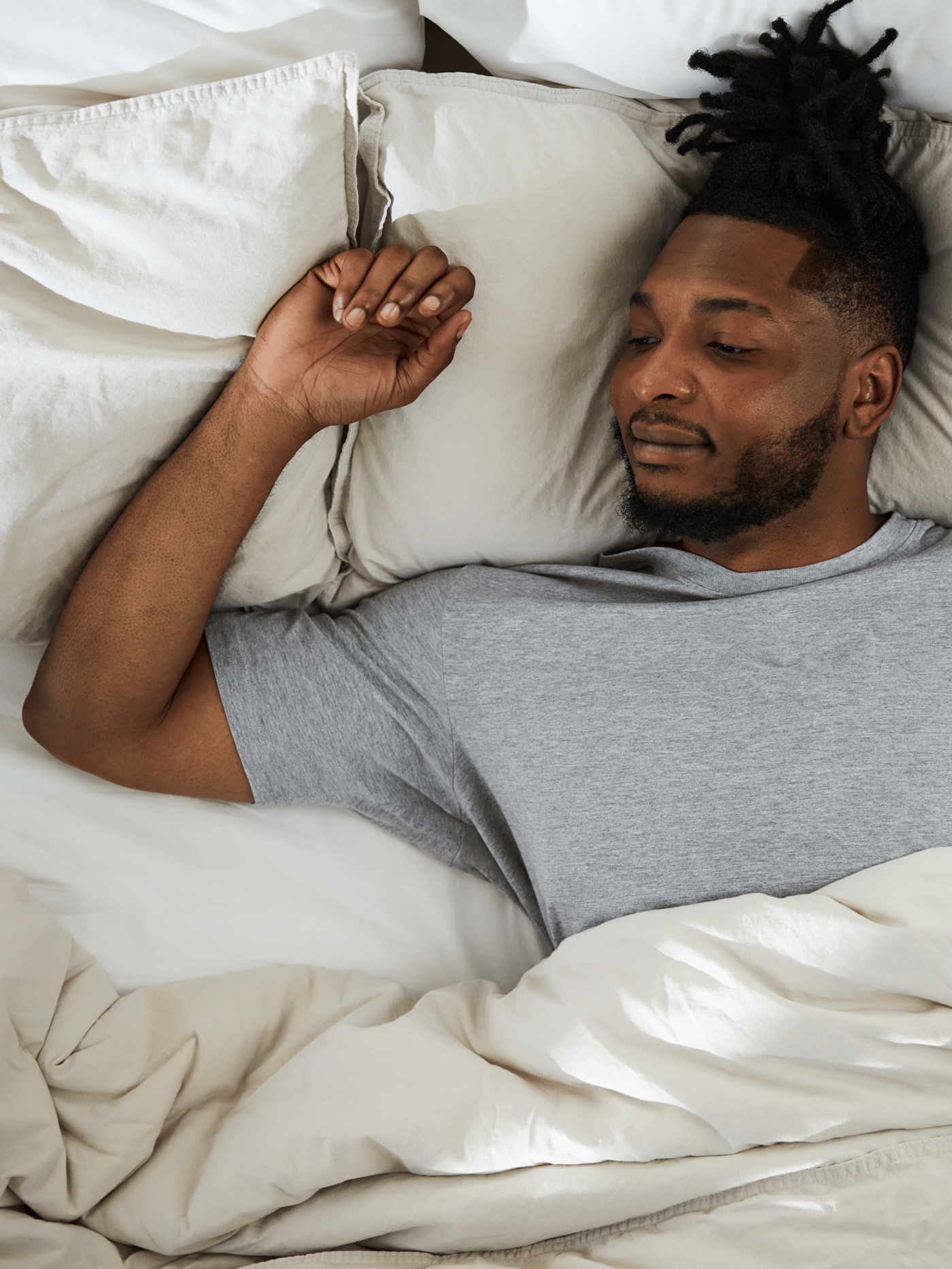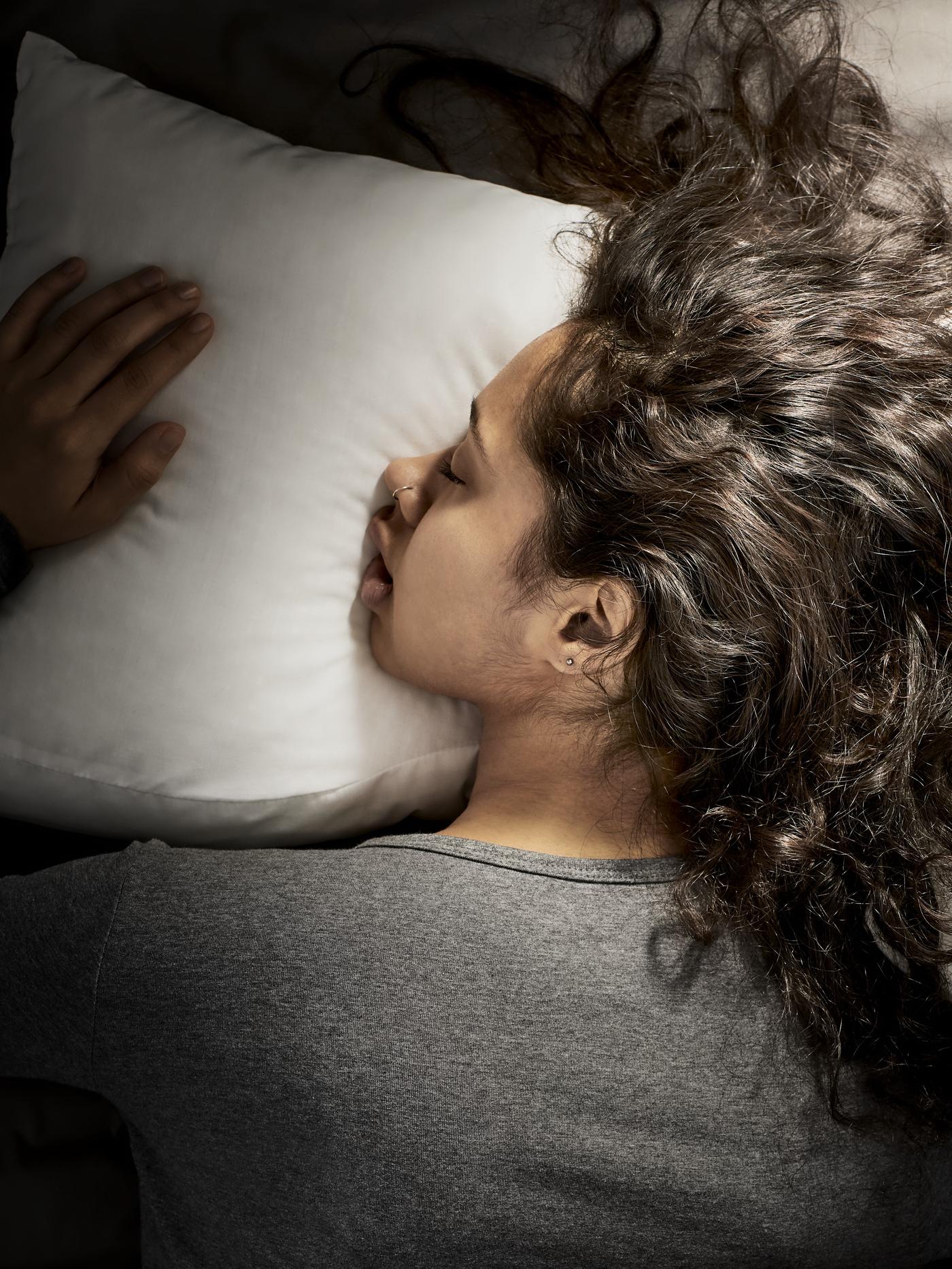Light
Light up your dream world
Make winding down before bed effortless with the right lighting. Find out how to create the perfect atmosphere for better sleep.
Close the curtains and dream on
Blackout curtains block all light sources, ensuring a restful sleep. Choose from our range of stylish designs and functional options.
What light is best for sleep?
Light exposure influences your Circadian rhythm, affecting your ability to sleep well. Ensuring a dark environment before and during sleep helps your body produce melatonin, the sleep hormone. Create the ideal dark sleep space for improved sleep quality, promote natural sleep patterns, and enjoy deeper, more restorative sleep.
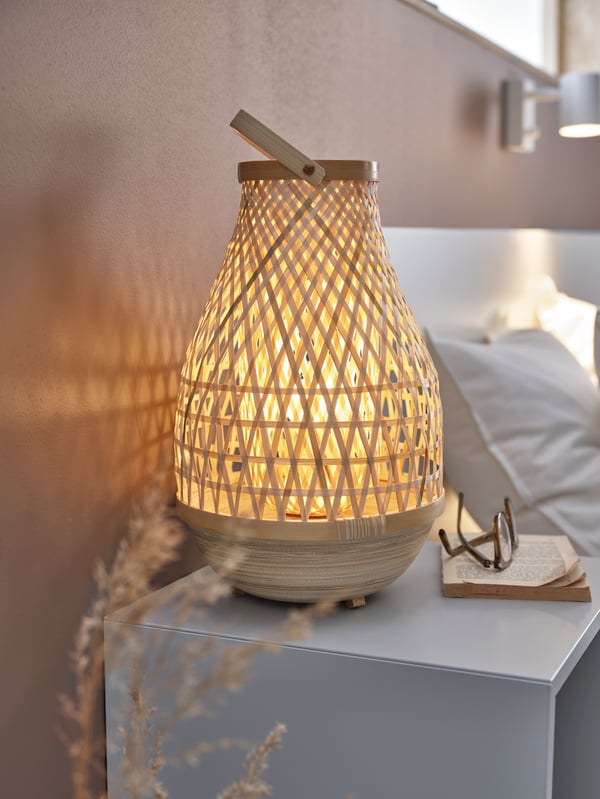
- Product information page
Bamboo beauty
The MISTERHULT lamp provides sustainable innovation with the benefit of bamboo beauty. By using what would be discarded bamboo leftovers, each lamp is handwoven by skilled craftspeople which means, each one of our MISTERHULT lamps is completely unique!
Explore more essentials for great sleep
Your lights are set for a deep, dark slumber. Now let’s learn about the other five components that can help you get a great night’s sleep every night!
The role of lighting in sleep quality
Lighting significantly impacts your sleep quality by influencing your circadian rhythm, which regulates your sleep-wake cycle. Proper lighting can help you fall asleep faster and enjoy deeper, more restful sleep. Here’s how to optimize your bedroom lighting for better sleep.
Tips for optimizing bedroom lighting
Use blackout curtains
Blocking out external light sources is crucial for creating a dark sleep environment. Here’s how to use blackout curtains effectively:
- Installation: Install blackout curtains that fit your windows properly to prevent light from seeping in around the edges.
- Layering: Combine blackout curtains with regular curtains or blinds for added insulation and light control.
- Quality: Choose high-quality, thick fabrics that effectively block out light and provide some noise reduction.
Dim the lights in the evening
Dimming the lights in the evening can signal to your body that it’s time to wind down. Here’s how to do it:
- Dimmer switches: Install dimmer switches on your bedroom lights to easily adjust the brightness.
- Gradual dimming: Gradually lower the lights over the course of an hour before bed to mimic the natural sunset.
- Ambient lighting: Use ambient lighting such as table lamps or wall sconces instead of bright overhead lights.
Avoid screens before bed
The blue light emitted by screens can interfere with your sleep. Here’s how to manage screen use:
- Screen-free hour: Avoid using screens like phones, tablets, and computers at least an hour before bed.
- Blue light filters: Use blue light filters or apps that reduce blue light emission in the evening.
- Alternative activities: Engage in relaxing activities such as reading a book, listening to music, or practicing meditation.
Use soft, warm lighting
Soft, warm lighting creates a calming atmosphere conducive to sleep. Consider these options:
- Warm-toned bulbs: Choose bulbs with a warm color temperature (around 2700K) for your bedroom lights.
- Bedside lamps: Use bedside lamps with warm, soft light for reading or winding down in the evening.
- Smart bulbs: Invest in smart lamp that can be adjusted to different color temperatures and brightness levels.
Consider a sleep mask
If you can’t eliminate all light sources, a sleep mask can help. Here’s how to choose and use one:
- Comfort: Choose a comfortable, adjustable sleep mask made from soft materials.
- Light Blocking: Ensure the mask effectively blocks out light without putting pressure on your eyes.
- Consistency: Use the sleep mask consistently to help your body get accustomed to complete darkness.
Additional strategies for optimal lighting
Install motion sensor lights
Motion sensor lights can provide convenience without disrupting your sleep. Here’s how to use them:
- Nighttime Use: Install motion sensor lights in areas where you might need light at night, like hallways or bathrooms.
- Soft Lighting: Choose motion sensor lights with soft, dim lighting to avoid harsh light that can fully wake you up.
- Automatic Shutoff: Ensure the lights have an automatic shutoff feature to conserve energy and minimize disruption.
Utilize red or amber night lights
Red or amber lights are less likely to interfere with your sleep. Here’s how to use them:
- Placement: Place red or amber night lights in areas where you need low-level illumination, such as near the bed or bathroom.
- Intensity: Choose lights with a low intensity to provide just enough light to navigate without fully waking up.
- Health Benefits: These colors are less disruptive to melatonin production, the hormone responsible for regulating sleep.
Manage natural light exposure
Natural light exposure during the day can improve your sleep quality at night. Here’s how to optimize it:
- Morning Sunlight: Spend time in natural sunlight in the morning to help regulate your circadian rhythm.
- Daylight Exposure: Keep your blinds or curtains open during the day to let in natural light.
- Evening Darkness: Close your blinds or curtains in the evening to create a darker environment that signals bedtime.
Create a sleep-friendly lighting schedule
Establishing a consistent lighting schedule can reinforce your body’s natural sleep-wake cycle. Here’s how:
- Consistent Bedtime: Maintain a consistent bedtime and wake-up time, even on weekends.
- Lighting Routine: Develop a lighting routine that includes dimming lights in the evening and exposing yourself to bright light in the morning.
- Adjust for Seasons: Adjust your lighting schedule based on the seasons to maintain a consistent sleep environment year-round.
